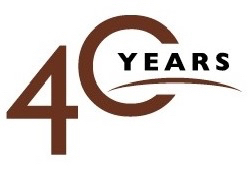Information
-
-
Project Name
-
City /State
-
Date
-
Superintendent
Site Audit
1. Working at Heights
-
1.1 Photos Required!
-
1.1 All edges with a 6 foot fall risk are protected with handrails at 42” to withstand 200lbs horizontally with 21” midrail and toeboard?
-
Photos Required!
-
1.2 Photos Required!
-
1.2 Is a fall protection system being utilized while workers exceed heights over 6 feet?
- PFAS
- Handrails
- Warning Line
- Safety Monitor
- Controlled Access Zone
-
Photos Required!
-
Additional Notes
2. Small Tools and Equipment
-
2.1 Laser Warning signs are displayed when lasers are in use?
-
2.2 Workers operating powder actuated tools possess the proper training card for the equipment?
-
Additional Notes
3. Scaffolds
-
3.1 Photos Required! (Scaffolding Tags and Scaffolds)
-
3.1 Scaffolding is erected properly. Daily inspections are documented and scaffolding is tagged with current status of Red, Yellow, or Green.
-
Photos Required! (Scaffolding Tag and Scaffold)
-
Additional Notes
4. Lifting Equipment
-
4.1 Skid Steers, Forklifts and Cranes on the jobsite have undergone a written daily inspection prior to usage each day?
-
Additional Notes
5. Harness and Equipment
-
5.1 All PFAS have been inspected and are in good condition with no found discrepancies?
-
Additional Notes
6. Ladders
-
6.1 Ladders are in good condition?
-
6.2 Stepladders are used only in the fully opened position without standing on the top or the first rung below the top?
-
6.3 Straight ladders are set at the proper angle, extend 3 feet above the landing surface and are tied off at the top?
-
Additional Notes
7. Hazardous Chemical (including fuel and oil)
-
7.1 Flammables are properly stored away from ignition sources or where spills could enter stormwater drains. etc?
-
7.2 Compressed gas cylinders are all secured. Flammable and non-flammable cylinders are stored a minimum of 20 feet from each other?
-
7.3 All containers on-site are properly labeled of their contents?
-
7.4 Photos Required!
-
7.4 Large propane tanks are protected by large visual cones; barricaded where adjacent to traffic?
-
Photos Required!
-
Additional Notes
8. Emergency Response
-
8.1 All workers have been trained on emergency procedures. Procedures are displayed. Emergency maps are displayed on each building level?
-
8.2 Adequate first aid kits available. An eye wash station is located on the jobsite?
-
Additional Notes
9. Personal Protective Equipment (PPE)
-
9.1 Adequate PPE sun protection, hardhats, eye glasses, high visibility safety shirts or vests, long pants, masks, sturdy leather work boots; steel toe where required, and gloves are utilized by each worker or visitor on site?
-
9.2 Photos Required!
-
9.2 Is Fall Protection being monitored and used properly?
-
Corrective Actions
- Recommeded for Training
- Verbal Warning
- Written Warning
- Removed from Job Site
- Other
-
Explain other corrective actions
-
Photos Required!
-
Additional Notes
10. Work Environment
-
10.1 Adequate toilet facilities are provided and maintained?
-
10.2 Functioning temporary lighting is provided in all work areas, bulbs are protected, lights and cords are suspended at least 8 feet above the floor. Strings of lights get power from circuits not providing power to other uses?
-
10.3 Photos Required!
-
10.3 Inside work areas are clean and organized?
-
Photos Required!
-
10.4 Photos Required!
-
10.4 Exterior site areas are clean and organized?
-
Photos Required!
-
10.5 Holes greater than 2” are properly covered, secured, marked and able to withstand 2x the intended load?
-
Additional Notes
11. Electrical Hazards
-
11.1 Electrical cords are at least 12 gauge, contain proper grounding plugs and are undamaged?
-
11.2 ALL extension cords are protected with GFCI protection?
-
11.3 Overhead electrical lines are protected from accidental contact?
-
11.4 All temporary electrical panel boxes are current with their monthly GFCI inspections?
-
11.5 Electrical cords are protected from equipment being driven on them?
-
Additional Notes
12. Environmental Hazards
-
12.1 An effective vehicle tracking pad is in place that prevents tracking mud or dirt onto public or private streets?
-
12.2 The erosion control log is up to date?
-
12.3 All storm water systems and devices are in place to prevent on-site contaminates from entering the storm water?
-
Additional Notes
13. Job Site Record Book
-
13.1 "Toolbox Talks" being discussed & signed?<br>
-
13.2 Toolbox Topic for the Week
-
(Take Picture of Signed "Toolbox Talk" )
-
13.3 All individual daily documents being filled out on job site daily? (Skid Loader, Scissor Lift, JLG, Cranes, Welding Machines, Rod Oven, Daily Sling Inspection, Scaffolding Inspection) <br>
14. Welding
-
14.1 Fire extinguisher in reach of ANY and all Hot Work?<br>
-
14.2 Photos Required!
-
14.2 Are fire extinguishers located a minimum of 1 per every 3000sf throughout project job site?
-
Photos Required!
-
14.3 Spark containment (Fire Blankets, Welding Screens)<br>
-
14.4 Welding leads in good condition?<br>
15. Potential Hazards for Upcoming Week
-
15.1 First time crew members on site?<br>
-
Do they understand scope of work, hazards, and procedures?<br>
-
Type name of Crew Member
-
15.2 Potential hazards for upcoming week? (Tap at right to select multiple options)
- Overhead Work
- Pinch Points
- Hot Stress
- Slips Trips
- Rigging Failure
- Inhalation
- Hot/Cold Surfaces
- Moving Equipment
- Falls
- Flammable/Combustible
- Civil Work with Shoring
- Other
-
Manually Enter "Other" potential hazards
16. Corrective Actions
-
Enter any "positive" safety actions taken onsite. These pictures should consist of safe items that reflect positively onsite.
-
Add photos of "positive" safety items onsite.
17. Sign Off
-
Print and Sign.
-
Name of anyone onsite that was notified of unsafe work practices as part of this audit.
-
!!Don't forget to use the export feature when exporting this audit, and email to your Project Manager and Project Assistant!!









